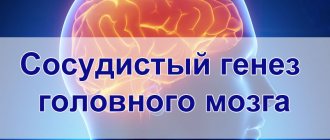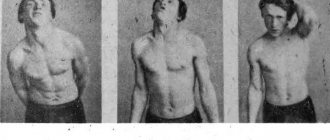Types of vegetative-vascular dystonia (VSD)
Depending on how the cardiovascular system reacts to a disorder of the autonomic nervous system, 4 types of VSD are conventionally distinguished: hypertensive, hypotonic, cardiac and mixed. A more detailed study of the signs of vegetative-vascular dystonia made it possible to identify 3 more types of disorder: vagotonia, cerebral-type VSD and somatoform dysfunction.
This typology is outdated, however, it allows you to classify all symptoms of VSD. The problem of diagnosing autonomic dysfunction is acute, and patients often become victims of ignorance or inattention of doctors. Let's figure out what symptoms may indicate the presence of one or another form of autonomic dysfunction.
What treatment is prescribed?
Drug therapy
The basis of the fight against cerebral type VSD? normalization of cerebral circulation. To restore normal vascular function and stabilize the general condition, the following groups of drugs are prescribed:
Pathology is treated with medications of various groups of action.
- sedatives, which in severe cases are replaced with tranquilizers and antidepressants;
- hypo- or hypertensive drugs;
- sleeping pills;
- nootropics;
- psycholeptics;
- adaptogens;
- antiarrhythmic drugs;
- drugs that improve cerebral circulation.
- multivitamins.
Non-drug effects
For the treatment and prevention of cerebral type VSD, the patient should adhere to the following recommendations:
- Eat properly. You should minimize your intake of sugar and salt and avoid animal fat. The diet should be based on fresh vegetables and fruits, cereals, and seafood.
- To refuse from bad habits. Smoking and drinking alcohol are harmful not only to blood vessels, but also to the entire body.
- Get a massage periodically. The technique normalizes blood circulation, relieves spasms, helps the patient relax and get rid of stress.
- Exercise. Physical activity is critical. Do vigorous physical labor, gymnastics, swimming, cycling, walking and hiking normalize the functioning of the cardiovascular and nervous system and promote the production of serotonin? the hormone of happiness necessary for people suffering from VSD.
- Change your way of thinking. For a person with the cerebral form of VSD, it is important to become an optimist, learn to calmly perceive the troubles that happen and not get too worked up about yourself. This can be achieved through auto-training and psychotherapy.
VSD of cardiac type
In the cardiological (as well as in the hypertensive) form of autonomic dysfunction, the diagnosis will most likely show obvious sympathicotonia, that is, functional tension in the work of the sympathetic department of the ANS. A distinctive feature of VSD of the cardiac type is pain in the heart area (stabbing, pressing or burning sensations in the chest area). Signs may resemble those of an angina attack or myocardial infarction. But upon examination, cardiac pathologies are not detected.
The cardiac type of reaction to a vegetative-vascular disorder is characterized by: tachycardia, cardiac arrhythmia, false pain in the heart area, as well as respiratory arrhythmia and asthma attacks. It is important to understand that with VSD, pain in the heart area is not a harbinger of a heart attack and does not in any way affect the cardiovascular system, which will be confirmed by the patient’s echocardiogram. Cardiac rhythmography is very effective in diagnosing this type of VSD.
Symptoms of cerebral vascular dystonia
The disease has a variety of manifestations, depending on many factors (type, form of the disease, background conditions). A worrying symptom for all types of disease is headache . It has a different etiology, character and is localized in the temporal, parietal, and occipital regions.
Additional signs:
Vertigo;- Increased intracranial pressure - nausea, vomiting, puffiness of the eyelids;
- Deterioration of memory, attention, intellectual potential;
- Noise in ears;
- Nervous and mental disorders;
- Sleep disorders, apathy;
- Subjective feeling of lack of air, body aches, bloating in the head;
- Focal symptoms are visual and auditory disorders, convulsions, sensory disturbances, paresthesia, flaccid paresis of the limbs, muscle hypotonia, tics, unsteadiness of gait.
The symptoms described above vary in patients with different types of dystonia.
It is worth remembering that angiodystonia of cerebral vessels can occur in the form of spasm or dilation of the vascular bed.
The hyperkinetic type (hypertensive) is characterized by increased pressure in the blood vessels and an increase in pulse rate and is manifested by pain in the back of the head and pulsation in the temples. This type of dystonia is more often complicated by hypertension and stroke.
The hypokinetic type (hypotonic) is characterized by paretic dilation of blood vessels and a decrease in blood circulation speed and pressure in them. Manifested by sudden dizziness, weakness, loss of consciousness, coldness of the extremities.
The normotonic type is characterized by the occurrence of symptoms only in response to strong psycho-emotional stress. This type is characterized by symptoms of both hyper- and hypokinesis of the vascular wall.
The cardiac type is characterized by the prevalence of symptoms of cardiac dysfunction. Unpleasant sensations in the heart area, sudden acceleration or deceleration of the rhythm, extrasystoles, arrhythmia.
VSD of mixed type
Depending on how the cardiovascular system reacts to a disorder of the autonomic nervous system, the 3 types of VSD described above are conventionally distinguished. But, as a rule, vegetative-vascular dystonia includes several types of symptoms at once.
The mixed type is characterized by a combination of the above symptoms. Blood pressure “jumps”, a person feels sometimes depressed, sometimes irritated, sometimes experiences weakness, sometimes excessive emotional overexcitation, and his mood changes sharply. With a mixed type of VSD, the whole spectrum of symptoms can manifest itself: cardiac and respiratory arrhythmia, panic attacks, pain with vague localization. This type of autonomic disorder is the most common.
VSD of vagotonic type
Vagotonia is characterized by a wide variety of symptoms, which can raise suspicion of serious diseases of the heart, endocrine or respiratory system, diseases of the gastrointestinal tract or even the psyche. A thorough examination does not reveal any pathologies in the organs and systems of the body. And as a “diagnosis of exclusion,” the patient is diagnosed with “VVD of the vagotonic type.” Indeed, a variety of symptoms that do not fit into a single pathological process are caused by vagotonia - hypertonicity of the vagus nerve (“vagus”). The vagus nerve regulates the activity of organs, glands and blood vessels, and an increase in its tone causes spasm of smooth muscles throughout all structures of the body.
With this type of VSD, the activity of the parasympathetic part of the nervous system predominates (over the sympathetic), which will be confirmed by the diagnosis of CRH. A person becomes apathetic, unsure of himself, suspicious, suffers from hypochondria, suspecting that he has the most terrible and, perhaps, still unknown disease. Memory for specific things often deteriorates: numbers, dates, details, and mental activity decreases.
Physical symptoms are bradycardia, hypotension, vestibular disorders (dizziness and fainting), fatigue, shortness of breath, pale skin, cold extremities, non-localized pain in the abdomen and chest. Despite the broken state, the person experiences difficulty falling asleep and does not sleep well during the night. In advanced cases, patients experience panic attacks, depression and suicidal tendencies. Symptoms can appear in a complex manner, or they can be localized - when complaints are limited to one of the organ systems. The disease can be chronic or manifest itself in the form of outbreaks, vegetative crises, when the condition sharply worsens. In vagotonic children, the pathology also manifests itself in an abundance of allergic reactions.
Cerebral angiodystonia: causes and symptoms, diagnosis, treatment and prevention
Cerebral angiodystonia is a pathology expressed in a violation of the ability of the blood vessels of the brain to adapt to the negative influence of the environment. In this case, the mechanisms that regulate vascular tone fail, which ultimately leads to cerebral circulation disorders.
In order to correctly diagnose and treat angiodystonic syndrome, it is necessary to know its main symptoms and understand what causes it.
Characteristics of the disease
First of all, you should understand what cerebral angiodystonia is?
Angiodystonia, also known as vascular dystonia, is a violation of vascular tone due to improper self-regulation. When the internal mechanisms that ensure changes in vascular tone fail, the vessels cease to adequately respond to changes in the external and internal environment. This condition is called dystonia.
If the regulation of tone in the vessels of the brain is disrupted, then we can talk about cerebral vascular dystonia. In this case, pathological changes affect the smooth muscles of the cerebral arteries.
Note! If the pathology concerns the vessels that supply blood to the visual organs, the patient is usually diagnosed with retinal angiodystonia.
The results of impaired cerebral vascular tone can be very different. Most often they manifest themselves in the form of paroxysmal changes in blood pressure, headaches, etc.
Cerebral angiodystonia is a disease that is a consequence of a failure in this indicator, and it develops in the vessels of the brain
Causes of cerebral angiodystonia
Most often, angiodystonia in patients does not occur as an independent pathology, but as one of the disorders accompanying the “main” disease.
Violations of tone can occur when:
- pathologies of the endocrine system;
- disruptions in the gastrointestinal tract, leading to metabolic disorders;
- varicose veins;
- disturbances in the functioning of the autonomic nervous system;
- pathologies of the central nervous system;
- high intracranial pressure;
- concussions and other injuries;
- allergic reactions;
- amyloidosis, etc.
Angiocerebral dystonia can also develop against the background of:
- physical inactivity;
- increased lability of the nervous system (irritability or impressionability);
- long-term smoking;
- alcohol abuse.
A typical situation is when the mechanism for regulating vascular tone is disrupted with age. The most important role in this case is played by hormonal changes, as well as a decrease in the elasticity of the vessels themselves and a decrease in the efficiency of their smooth muscles.
Angiodystonia does not appear as an independent disorder in the functioning of cerebral vessels
Clinical picture: main symptoms
Angiodystonia of cerebral vessels can manifest itself in three main forms:
- Hypotonic. Accompanied by a decrease in vascular tone and, as a consequence, vasodilation. Fainting and migraines are typical for this form of pathology. Against the background of insufficient blood supply to brain tissue, mental and physical performance, acuity and concentration decrease. Possible memory impairment.
- Hypertensive. Manifests itself in the form of vascular spasms and attacks of increased blood pressure. Progressive angiodystonia of the hypertensive type is accompanied by arterial hypertension, headaches (sharp and pulsating), and arrhythmia.
- Mixed. This form is characterized by manifestations of dystonia of the two types described above. In addition to these symptoms, patients suffer from pain in the cervical and thoracic spine, difficulty working with complex information, and decreased efficiency of sensory systems (vision, hearing, smell).
With any form of pathology, the following signs of cerebral angiodystonia are noted:
- headaches (may vary in nature and location);
- dizziness (with severe pathology - up to loss of orientation in space);
- noise in ears;
- increased fatigue, developing even against the background of minor mental and physical stress.
When vascular spasm occurs, a person may feel attacks of sharp and sudden pain
In addition, during diagnosis the following may be noted:
- displacement of blood vessels relative to their normal position;
- narrowing of veins and arteries;
- disruption of the blood supply to certain areas of the brain due to weakening of blood flow.
Possible consequences
In the absence of adequate therapy, cerebral angiodystonia of cerebral vessels gradually worsens.
As the pathology worsens, the following may develop:
- increased symptoms, including increased frequency and intensity of pain;
- a sharp decrease in working capacity;
- noticeable decline in cognitive function;
- psychoemotional disorders (depression);
- encephalopathy, accompanied by disturbances of consciousness and memory.
Diagnosis of angiodystonia
As is the case with other pathologies, early diagnosis of angiodystonia significantly facilitates treatment. Therefore, if signs characteristic of this disease are detected, it is necessary to consult a doctor as soon as possible for diagnostic procedures.
One of the techniques is rheoencephalography, a procedure that involves examining the blood vessels of the brain.
Dystonic changes in blood vessels are diagnosed using:
- Ultrasound of the heart (allows us to identify changes of an ischemic nature);
- Ultrasound of blood vessels;
- studies of cerebral vessels - rheoencephalography (REG).
Angiodystonic type REG is performed for:
- assessing the level of vascular tone;
- determining the elasticity of vascular walls;
- fixing the reactivity of the vascular system.
Based on the results of these studies, a final diagnosis is made. In this case, the signs of cerebral dystonia are necessarily separated from the symptoms of concomitant pathologies.
Treatment and prevention of cerebral angiodystonia
During the treatment of angiodystonia, the main tasks are to relieve the symptoms of the pathology and eliminate the causes of the disease.
To normalize vascular tone and reduce discomfort, complex therapy is used:
- for pain relief, use “Analgin”, “Pentalgin” or stronger analogues;
- To reduce blood pressure in hypertensive angiodystonia, antihypertensive drugs “Bisoprolol” and “Captopres” are used;
- a decrease in vascular tone and a calming effect are provided by sedatives, such as Novo-Passit, tinctures of valerian or motherwort;
- arrhythmia is eliminated by prescribing calcium channel blockers (Verapamil and analogs).
Based on the diagnostic data obtained, the doctor prescribes treatment therapy
In complex therapy, nootropics (Piracetam) can be used to stimulate brain activity, and antidepressants (Amitriptyline) can relieve depression of the nervous system and improve the general condition of the patient.
Note! The selection of a treatment regimen and specific drugs should be carried out by a qualified specialist, taking into account the nature of the disease, its dynamics and the initial condition of the patient. Self-medication in this case is not only undesirable, but also dangerous - it can lead to aggravation of the clinical picture.
Therapeutic exercise is useful both in the treatment of angiodystonia of cerebral vessels and in the prevention of this pathology.
In addition, prevention should include:
- healthy lifestyle;
- rejection of bad habits;
- proper rest and sleep (at least 8 hours a day);
- physical activity;
- dosed intellectual loads, etc.
Following these recommendations will help reduce the likelihood of experiencing the most unpleasant symptoms of cerebral dystonia, even in old age.
VSD of cerebral type
With vegetative-vascular dystonia of the cerebral type, the tone of the blood vessels in the brain is disturbed. The blood vessels spasm, which leads to disruption of blood supply and nutrition to the brain. Cells lack oxygen, and blood flow deteriorates.
The primary symptoms are headaches, dizziness, blurred vision, noise and pounding in the ears, and nausea. Other symptoms of VSD may also appear: pain in the heart, tachycardia, vascular instability (bouts of heat, sweating, pale skin), difficulty breathing, shortness of breath and a number of other symptoms. According to cardiac rhythmography data, VSD of the cerebral type will be expressed by hyperactivity of waves from the autonomic centers of the brain and, possibly, sympathetic waves.
Causes, symptoms and treatment of cerebral dystonia
Vegetative-vascular dystonia of the brain is manifested by characteristic symptoms, which develop due to insufficient nutrition of the brain due to narrowing of the surrounding vessels. Signs of the disease can appear in a variety of forms.
Because of this, diagnosing cerebral dystonia is a complex procedure. Similar symptoms can be caused by other diseases. Therefore, VSD is not included in the international classification. It is defined as a complex of diseases (ICD-10 code – G90-99). Cerebral dystonia occurs in both adults and children.
Men are more likely to experience such painful symptoms than women.
Treatment for cerebral dystonia depends on the type of dystonia.
Reasons for the development of pathology
Secondary dystonia develops due to lifestyle and poor nutrition. VSD can be caused by a difficult pregnancy or difficult childbirth. It is usually provoked by birth trauma. Damage to the cervical spine contributes to osteochondrosis.
This disrupts the flow of blood to the brain. Cerebral dystonia begins. In adults, in most cases, VSD is provoked by head injuries, constant stress, serious infections, hormonal changes, and venous insufficiency.
The following risk factors can be identified:
- Hereditary predisposition.
- Hormonal disorders in adolescence, during pregnancy, during menopause in women.
- Intoxication, infectious diseases. Traumatic brain injuries.
- Disrupted daily routine: insomnia, night work, lack of sleep.
- Sedentary lifestyle.
- Diseases of the endocrine system.
- Unbalanced diet with an abundance of fats, salt, sugar, preservatives, substitutes.
- Presence of bad habits: smoking, alcohol abuse.
- Chronic fatigue. Reduced immunity.
- Stress and other emotional disturbances.
- Spinal injuries.
- Difficult ecology.
- Moving to an area with a different climate or to a different time zone.
Symptoms of cerebral vascular dystonia
In all cases, patients with cerebral dystonia complain of frequent tinnitus, dizziness, and numbness. The main symptom is headache.
Dystonia of cerebral vessels is felt by pain in the temples and crown. The disease is accompanied by nervous disorders: apathy, depression, anxiety, rapid breathing, and confusion.
A person’s performance capacity sharply decreases and lethargy appears.
In the morning, there is increased swelling of the face, which goes away by noon. Cerebral dystonia according to symptoms is usually divided into the following groups:
- Cardialgic manifestations. Characterized by stabbing or aching pain in the heart area. They appear both during physical activity and in a state of complete rest.
- Arrhythmic manifestations. Sudden or systemic heart rhythm disturbances. They can be caused by a variety of diseases.
- Bradycardic symptoms. They manifest themselves as a decrease in heart rate to 40–50 beats per minute. In this case, dizziness, chills, and fainting occur.
- Tachycardia. It is characterized by a sharp (over 90 beats per minute) increase in heart rate without any compelling reason.
Diagnosis of cerebral type VSD
Diagnosis of cerebral dystonia should be carried out by several doctors: a therapist, a cardiologist, a neurologist, an angiosurgeon. At the first stage, the patient is interviewed and examined for complaints and external manifestations of the disease. The likelihood of genetic predisposition is assessed. All other diseases are excluded. Next, the following diagnostic measures are carried out:
- laboratory blood and urine tests;
- electrocardiogram;
- dopplerography;
- scanning of veins and arteries;
- X-ray of the spine;
- MRI;
- CT scan.
If necessary, consultations with a gastroenterologist and endocrinologist may be necessary. If hormonal imbalances are suspected, a hormonal level study is carried out. Portable devices are used for daily blood pressure monitoring.
The most accurate method is rheoencephalography. With its help, the entire vascular system of the brain is examined. Based on the results of rheoencephalography, data on the tone, elasticity, and reactivity of blood vessels is obtained.
Using this method, the state of the arterial and venous systems in the brain is assessed.
Preventive measures
Prevention of cerebral dystonia is based on three postulates: a healthy lifestyle, elimination of risk factors, and periodic medical examinations. It may be enough to regulate your work and rest schedule, give up bad habits, and create a calm environment both at home and at work. It is useful to go to bed at the same time, preferably before eleven o'clock in the evening.
Moderate exercise and walks in the fresh air help improve the condition of the blood vessels in the brain. You should avoid sitting for many hours at the computer or in front of the TV. It is important to stay in stuffy rooms with large crowds of people as little as possible.
You should drink plenty of fluids (preferably water) throughout the day. An annual medical examination will help to detect and eliminate the initial forms of cerebral dystonia in a timely manner. You shouldn’t put off solving your health problems “for later.”
Source: https://kardiodocs.ru/vessels/distoniya/prichiny-i-lechenie-pri-tserebralnoj-distonii.html
Somatoform dysfunction
With somatoform dysfunction, a person usually complains about a specific organ or group of organs that are regulated by the autonomic nervous system. These may be complaints about the cardiovascular, gastrointestinal, respiratory or genitourinary systems. The patient associates his condition with a physical disorder, but based on the results of the examination, the doctor finds no reason for it. The true cause of the malaise is a disruption in the functioning of the autonomic nerve centers. In addition to subjective localized pain, heaviness, burning or tension, specific symptoms of VSD can be easily identified among the patient’s complaints.
The variety of symptoms of autonomic dysfunction makes it difficult for the doctor to get to the root cause of the disease. Therefore, in addition to collecting anamnesis, it is important to conduct instrumental studies of the functioning of the autonomic nervous system. Find out more about diagnosing autonomic disorders.











